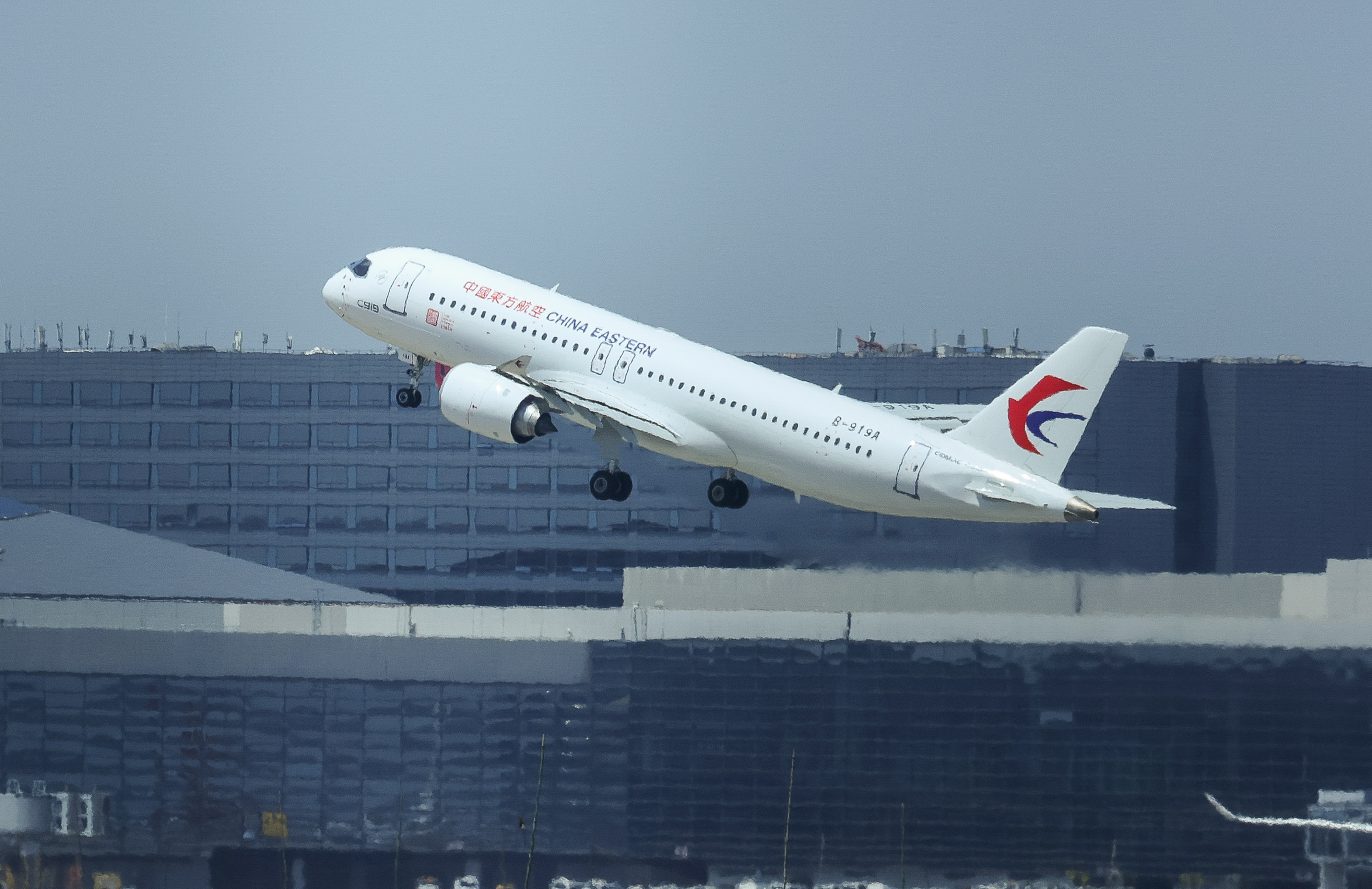C919 Comes with Flying Colors
China's first C919 large passenger aircraft took off from Shanghai Hongqiao Airport to Beijing Capital Airport and concluded its first commercial flight on May 28. (PHOTO: XINHUA)
By LIN Yuchen
At 10:32 a.m., Beijing time, May 28, China Eastern Airlines flight MU9191 took off from Shanghai Hongqiao Airport to Beijing Capital Airport using China's first C919 large passenger aircraft. Arriving in Beijing at 12:31 p.m., the C919 concluded its first commercial flight, making China the third in the world to have produced its own commercial large passenger aircraft, after the U.S. and Europe.
Featuring a maximum passenger capacity of 192 and a remarkable range of 5,555 kilometers, the C919 represents China's first self-developed jetliner that meets international standards of airworthiness. It is also the pioneering work of China's independent development of commercialized mainline airliners. The large passenger aircraft development in China had spanned decades, and C919 took nearly seven years just from its final assembly in 2015 to the completion of test flights in 2022.
Dedicated to the cause
In 2008, Wu Guanghui who is now academician of Chinese Academy of Engineering, was appointed as the vice general manager of the Commercial Aircraft Corporation of China in Shanghai, where he served as the chief designer of the C919.
According to Wu, during the numerous cooperative exchanges with the U.S., Germany and France, he experienced an unprecedented level of pressure he had never encountered before in his life. The weakness of the domestic aircraft manufacturing infrastructure and the monopoly and blockade of foreign technology meant that everything had to start from scratch, creating a great deal of stress for the designer.
"We were responsible for the whole aerodynamic design of the C919, from the wing and the fuselage to the whole aircraft, from the calculation to the distribution test. Our aircraft has not only to accord with international airworthiness, but also to reflect advanced technologies, and if this is not as advanced as other models, there will be few advantages [for it] in the market," said Wu, adding that, "We carried out this project when we had no previous experience. How to organize and operate to advance the whole project was always our biggest challenge."
To achieve such arduous expectations, Wu developed for his team the "711" and "724" work patterns. "711" means working in shifts 7 days a week and 11 hours a day; "724" means working 24 hours a day, 7 days a week, and in shifts on urgent, key jobs. As for Wu himself, since he began to work in aviation, he has not taken a day's vacation for decades.
As far as his team is concerned, no recklessness is tolerated and everything must be steady and stable.
Independent research and breakthrough
Since the beginning of the development of C919, more than 100 key technologies have witnessed breakthroughs, including the integrated design of the aircraft wing/engine/hanger, the control law of the telecommutations flight control system, active control technology, integrated modular avionics system, and finite element model analysis of the whole aircraft. The C919 front fuselage uses third generation aluminum alloy for most of the fuselage — the first time that aluminum-lithium alloy material is used in Chinese civil aircraft.
Though materials might be obtained through cooperation with foreign companies, due to the lack of prior experience in manufacturing plane modules utilizing this particular material, the process of forming the front fuselage long truss parts resulted in an unfortunate outcome. In the worst case, 46 out of 48 parts were scrapped, leading to a yield of less than 5 percent. Confronted with this daunting challenge, Aviation Industry Corporation of China took decisive action by constructing a sprawling plant in Nanchang spanning approximately 200,000 square meters—equivalent to the size of around 30 standard football fields. They also installed the second global,and first domestic skin mirror milling equipment.
A group of experienced skilled workers, programmers, and maintenance personnel lived in the rural Nanchang Aviation City to solve the problems of installation and testing, the improving aluminum-lithium alloy processing performance. After working for half a year without leaving the premises, they eventually successfully completed the mirror milling and cutting of 16 skin parts for the front fuselage and middle and rear fuselage of the large domestic passenger aircraft. This realized an important step in the independent domestic production of this aircraft.



